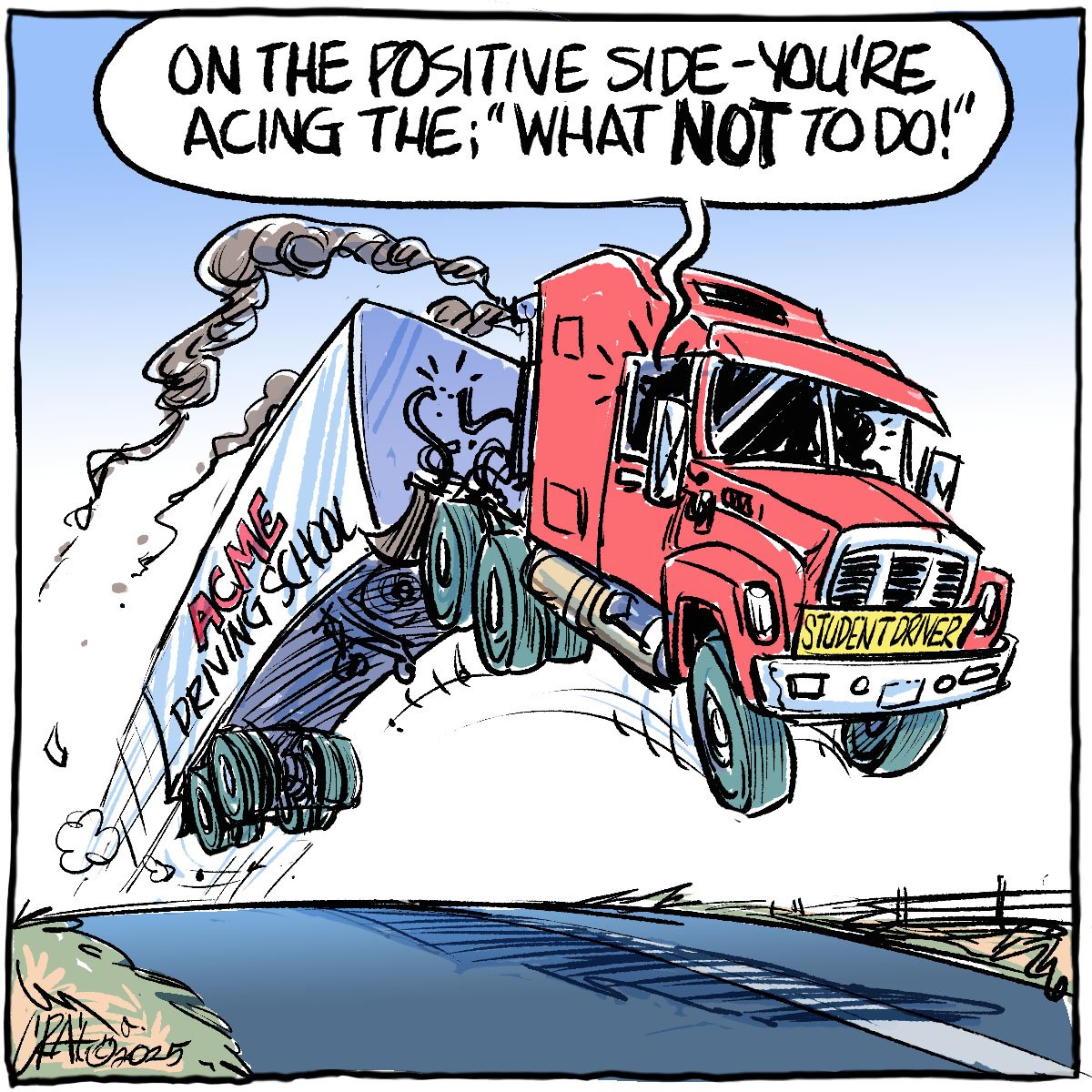Golden copper is a term we heard in the Zambian copper belt. Our guide wasn’t talking about metal, though, but the colour of tea, which is one of Kenya’s major export commodities. We toured a small holder owned tea factory in Kapsabet, Kenya.
The big tea plantations are in the Nandi Hills near Kapsabet, or the Kericho area east of Lake Victoria, which has smooth green fields like English lawn rolling off into the distance. Tucked among the tea fields are rows of little white houses, the homes of the tea pickers. Some are empty now, the pickers replaced by plucking machines. 
Read Also

Efforts to improve trucking safety must be applauded
The tragedy of the Humboldt Broncos bus crash prompted calls for renewed efforts to improve safety in the trucking industry, including national mandatory standards.
More than a year ago the tea picker union was successful in holding off most of the machines. Thousands of jobs would have been lost, with little prospect of finding another one.
The manager of the small holder factory we visit, Chebut Tea Factory in Kapsabet, would also like to automate the line of manual machinery in his factory. He says it is easier to control quality with machinery than with people, and also cheaper. As business people we understand, yet wonder aloud at the social consequences.
The hills around Kapsabet are strewn with small tea fields owned by individual small farmers. The manager walks us through his. At 3.5 acres, it is an average size.
Tea is a perennial shrub. There are some plants almost 50 years old in the area, but newer varieties are taking their place. Pruning and regular picking throughout the year make for the flat lawn-like appearance of the field. Of the glossy green leaves, only the top two of each branch make for a quality tea. Leaves are picked by hand in the early morning and brought to the factory in special trailers with hooks to hang the bags. 
At the factory they are distributed on long tables for the wilting process. Air is blown to bring the moisture down to 66 percent before the leaves are put through a cutting machine, where they are finely chopped. A moving band takes them through several rollers, which break the pieces down finer still.
The finished product will look more like a fine granulated instant coffee than the tea leaves we are used to in Canada. If this were to be sold as green tea, it would go directly into the dryer. For black tea, it first undergoes the fermentation process. Oxidation, in approximately 90 minutes of exposure to air blown through the tea, turns the particles into that golden copper colour. The heady smell reminds me of an alfalfa field in full bloom on a hot summer day.
Hot water boilers heated by wood fired furnaces provide heat for the dryer. This gives the small farmers another avenue of income. Trees are grown and the wood sold to the factory.
Coming out of the dryer, the tea is between 3.5 and four percent moisture with that dark color typical of black tea. It is graded and sorted, sent to the storage bins and packaged into bags of 65 to 70 kilograms. Then it is sent to tea auctions in Mombassa. There, buyers from all over the world will bid for high quality Kenyan tea, which often is mixed with teas from other countries to produce a desired blend.
Our guide, Charles, takes us to the quality control room. Each batch of tea is tested here and graded by sight and taste. Words like bloom, color, body, liquor, remind me of wine tasting, especially when Charles demonstrates the tasting of the tea. He takes a small sip, savours it on his tongue and then spits it into a spittoon. Tea, like wine, is a social drink!
Of course we buy a package of tea on our way out at the booth near the gate.
Previous entries
Diaries of a Global Farmer – April 24, 2008
Diaries of a Global Farmer – April 17, 2008
Diaries of a Global Farmer – April 10, 2008
Diaries of a Global Farmer – April 3, 2008
Diaries of a Global Farmer – March 27, 2008
Diaries of a Global Farmer – March 20, 2008
Diaries of a Global Farmer – March 13, 2008
Diaries of a Global Farmer – March 6, 2008
Diaries of a Global Farmer – February 28, 2008
Diaries of a Global Farmer – February 21, 2008
Diaries of a Global Farmer – February 14, 2008
Diaries of a Global Farmer – February 7, 2008
Diaries of a Global Farmer – February 1, 2008














